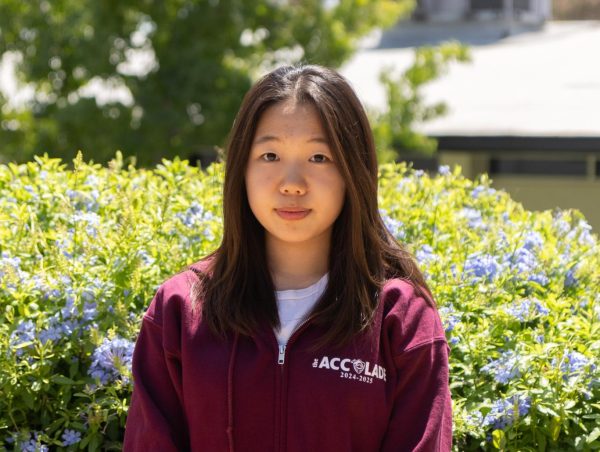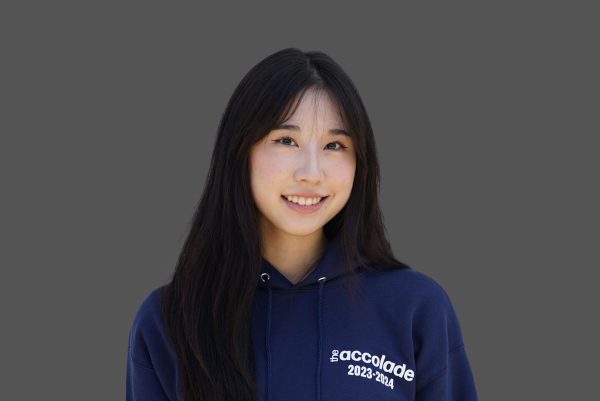HEAD TO HEAD: The de-influencing movement
Two Accolade reporters debate the productivity of the social media trend
March 16, 2023
This trend is well worth the shot
“Help Me.”
“SOS.”
Customers of the fast-fashion, online clothing brand SHEIN inspected the labels stitched on the tags of the company’s products to find these alarming messages, hypothetically printed by the factory workers.
The inspection began following a viral TikTok post exhibiting such messages on the tags of various pieces, and shortly after, a stream of social media posts surfaced, exposing the 75-hour work weeks and poor conditions of employees.
Despite such exploitations, the company has partnered with mega-influencers, like TikToker Addison Rae, to market its products to social media users.
The brand relies on influencer marketing to heighten its consumer count; for example, various influencers uploaded TikTok hauls of SHEIN items. The hashtag #sheinhaul garnered over 8.6 billion views on the platform.
The hundreds of social media influencers collaborating with the unethical brand in exchange for payments demonstrates a foundation of why the “de-influencing” movement transpired across platforms.
The trend rejects the cult-like consumerism perpetuated by social media influencers, calling for greater transparency between the content creator and the consumer. By revealing the truth behind the quality of “hyped” products, de-influencing draws attention to heedless purchases.
“This trend of de-influencing is so cool because I love seeing people being aware of their overconsumption and kind of like getting ready to consume more intentionally,” said sustainability advocate Jessica Clifton (@impactforgood_) in her Thursday, Jan. 19 TikTok video that amassed 25.4K views.
Thanks to the de-influencing trend, more consumers and content creators alike are willing to initiate important conversations on environmental and social consciousness.
However, some influencers use this trend to advertise and encourage viewers to buy alternatives. While it might help the viewers to make choices in spending less on expensive, overrated products, it doesn’t comply with the original aim of reducing overconsumption.
Although the videos did not directly stop the issue, the fact that people are trying to be part of this change and proactive movement is a step in the right direction.

Outside of The Accolade, Han enjoys staying involved around the campus through several clubs as a president and cabinet member. In her spare time, she takes pleasure in listening to music and playing her instrument.
It’s futile in initiating change
“Run, don’t walk to Target.”
That was what influencers announced when the janky Stanley Cups came back in stock after being sold out after selling out in practically all stores.
Today, a social media influencer’s nod of approval over a product signals the green light to the next “big thing” — and people absolutely rave over it.
With thousands of content creators promoting the same products, netizens feel inclined to spend heedlessly just to follow our role models.
Rejecting this culture of overconsumption, TikTokers conversely created a trend called “de-influencing” in which content creators focus on telling viewers what isn’t worth buying, especially the overrated, cult-favorite products such as the Dyson Airwrap, Charlotte Tilbury Contour Wand and Dior Lip Glow Oil.
The TikTok hashtag “#deinfluencing” garnered around 203 million views following the popularity of influencer Maddie Wells (@maddiebewells), who reportedly first used the term in 2020 to warn her followers about overhyped beauty products.
But despite what TikTokers discuss in their de-influencing videos, we’re still influenced.
In her Wednesday, Jan. 25 video, influencer Alyssa Stephanie (@alyssastephanie) slammed popular brands like Olaplex, Supergoop! and Charlotte Tilbury for their high price and low-quality products and followed up with alternatives that are “just as good” or “even better.”
“Here are all the things that I will de-influence you from buying,” she said.
Being told not to buy a specific item doesn’t change our relationship with beauty or consumption, especially when the next video we see tries to sell a “dupe” or a cheaper alternative. This not only continues to promote consumerism, but it also defeats the purpose of this trend by encouraging viewers to buy even more.
At its core, this movement strives to promote conscious and environmentally friendly habits.
However, creators have taken the movement entirely out of context. Despite its positive origins, de-influencing fails to initiate tangible change, as seen from the flop of a similar 2017 trend, “anti-haul.”
Instead, more influencers should consider promoting ways to solve the very root of over-consumption. Content creators like Tara Bellerose (@tarabellerose) should encourage consumers to finish up products they already own before purchasing items branded as “trendy.”
“If you have makeup like foundation or eyeshadow palettes and whatever else, use them until you’ve used them up,” Bellerose said. “Do you really need a drawer full of the same eye palettes?”
Trends come and go, and the hype around de-influencing will likely fade within the next month. But this is a valuable time for creators to re-evaluate their marketing strategies and avoid hopping on the train just for the sake of it.
Though some may argue that this trend helps reduce overconsumption, the misuse of de-influencing does no more than produce the same effects as internet influencing.
So for now, save your money and don’t run — just keep walking.

Outside of The Accolade, Kim participates in various clubs and organizations such as the California Association of Student Councils and Cooperation Act. She also enjoys creating playlists, taking naps and eating Korean food.

